Need for irrigation
In recent years, farmers have increasingly faced extreme weather conditions. During the growing season, we usually experience this in the form of prolonged drought. In North Limburg, where we also encounter a lot of sandy soil, irrigation is therefore sometimes necessary to achieve an acceptable yield and quality of roughage. A reel is often used for this purpose, but drip irrigation can also be a solution. Some trial plots with drip irrigation were thus laid out, with different types of hoses and watering.

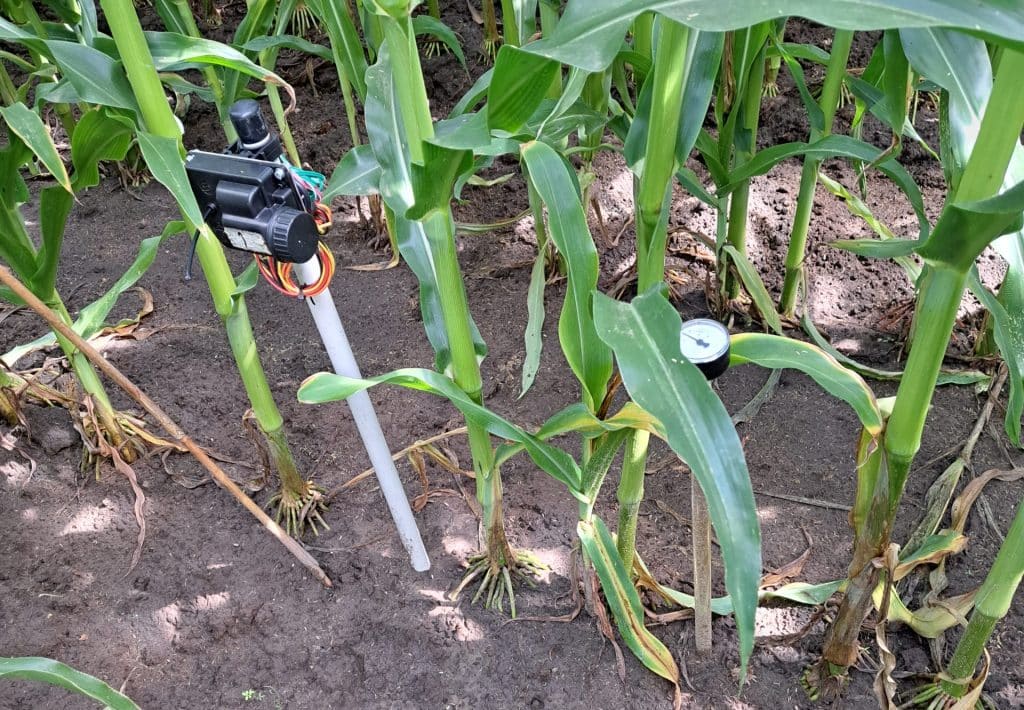
Sensors as a tool
It also looked at sensors to monitor suction tension to have a better picture of the plants' water needs. Suction tension can be thought of as the pressure a plant root needs to exert to still absorb water from the soil. Using the sensors, drip irrigation can be started even before external symptoms of drought stress can be observed.
Figure 2:A Watermark sensor and a tensiometer for monitoring suction tension.
Risky investment with benefits
Unlike a reel, drip irrigation obviously cannot be moved from one plot to another. Also, one can never predict in advance what kind of weather we are going to get during the growing season and whether the system should be deployed at all. Yet there are also a lot of advantages associated with drip irrigation. A lot of labour can be saved during the dry periods in the growing season. Likewise, there is no need for yieldless irrigation paths. Water reaches the plant roots directly and is absorbed immediately, for more efficient use of water. Since a lower pressure is used compared to reel irrigation, the energy costs for the pump unit are also lower.
Drip irrigation, with prices of EUR 800 per ha excluding installation costs, is not a cheap investment. This naturally means that, in the case of maize, a relatively large additional yield has to be created to achieve a positive balance for drip irrigation.
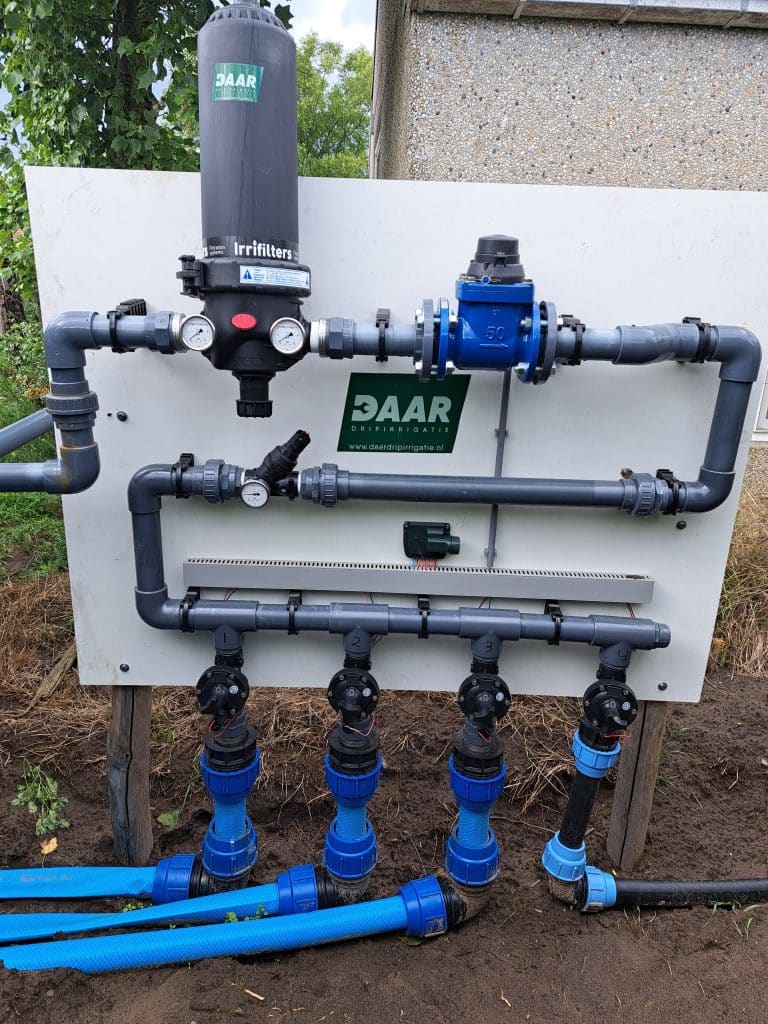
Figure 3: Irrigation board for controlling drip irrigation
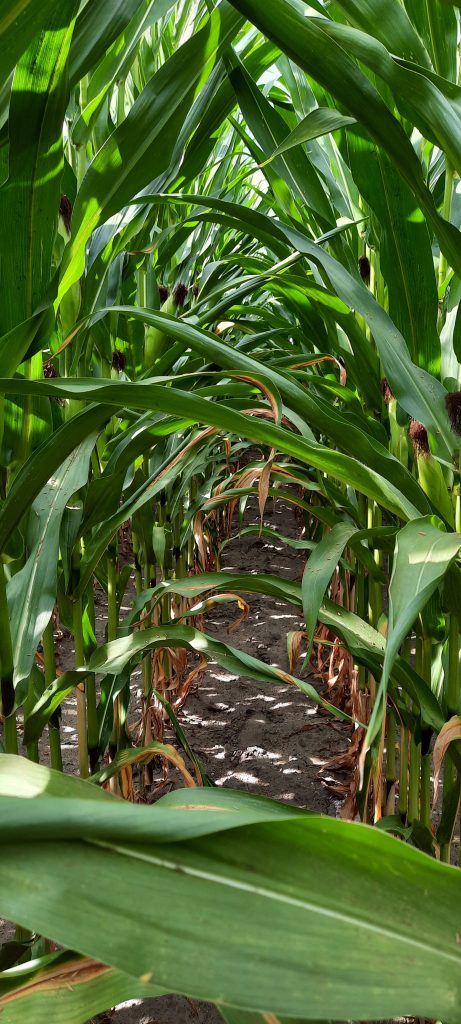
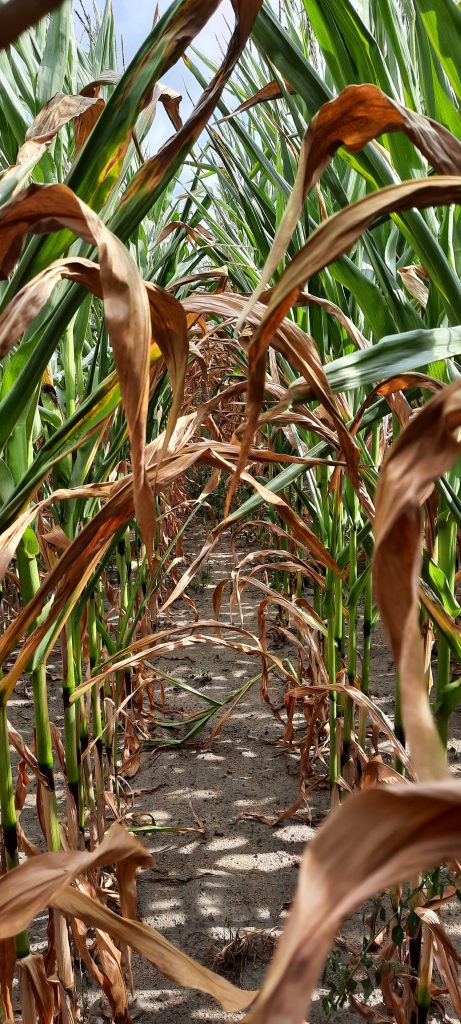
Results
2022
In a drier year like 2022, even a C4 plant like maize can suffer badly from drought stress (as also shown in the picture). Consequently, an additional yield of 9 tonnes of DS was observed compared to a non-irrigated plot. Of those 9 tonnes, 8 tonnes were then also from the maize cob and bracts. This means that besides the high extra yield, there was also a strong improvement in quality. Due to the high extra yields and quality gains, drip irrigation was therefore found to achieve a positive balance during crop year 2022.
Figure 4: Maize from an irrigated plot (left) and from a non-irrigated plot (right) on 25/07/'22
2023
In 2023, the results for drip irrigation were less positive. Drought stress was observed during the first half of July. After this, there was sufficient rainfall, so the maize still did not lack anything during the most crucial phase for flowering and cob setting. As a result, the cobs at the non-irrigated plot were about the same size as those of the irrigated plots. Plant height at the irrigated plots was found to be as much as 20 to 30 cm higher. DS yield was found to be 1 to 1.9 tonnes/ha higher when irrigated, but the starch content of the non-irrigated maize was certainly not inferior. The relatively low additional yields in the 2023 crop year did not outweigh the cost of drip irrigation.
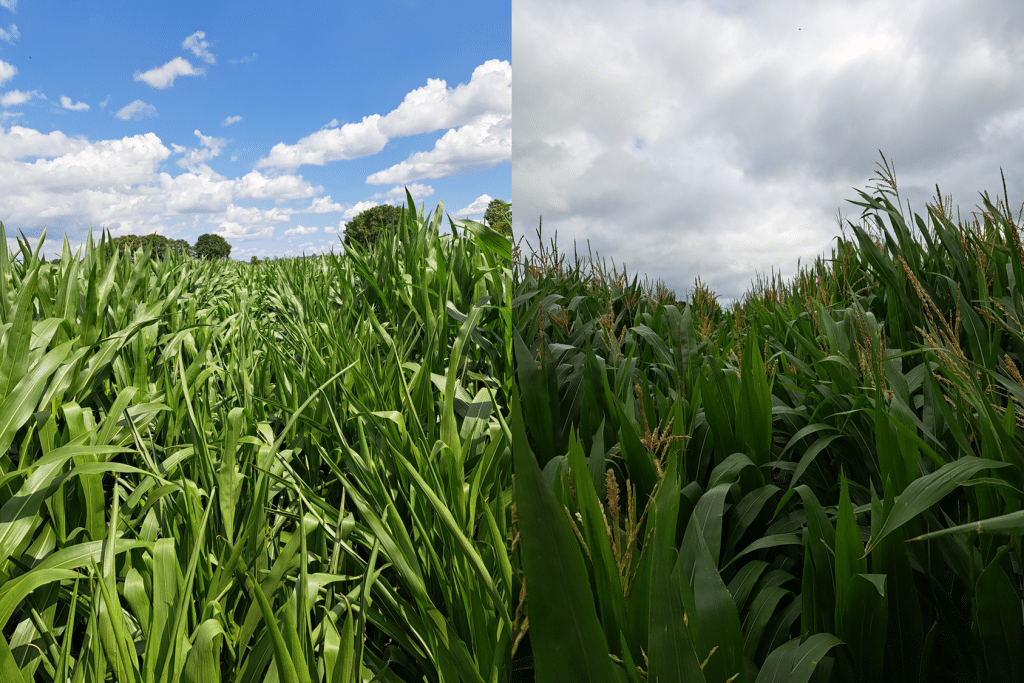
Figure 5: Two non-irrigated rows show drought stress with tightly curled leaves (12/07/'23). Two weeks with rainfall later, the maize is flowering and can only be distinguished by the lower plant height.
Conclusion
Although sprinkling/irrigation proves necessary some years, it is still economically difficult to justify drip irrigation in maize cultivation. In drier years, drip irrigation can certainly add value when used correctly. A positive balance can therefore be achieved and at the same time a lot of labour can be saved during dry periods. Of course, this is offset by a fairly labour-intensive installation at the beginning of the growing season. During a wetter year, with sufficient precipitation during key periods, drip irrigation naturally remains a major expense that can add little.
More information can be found in the Final report.



